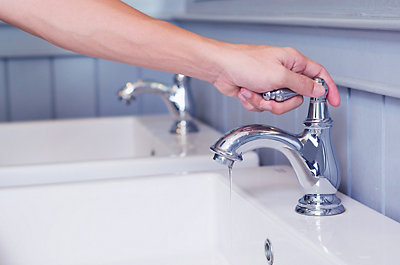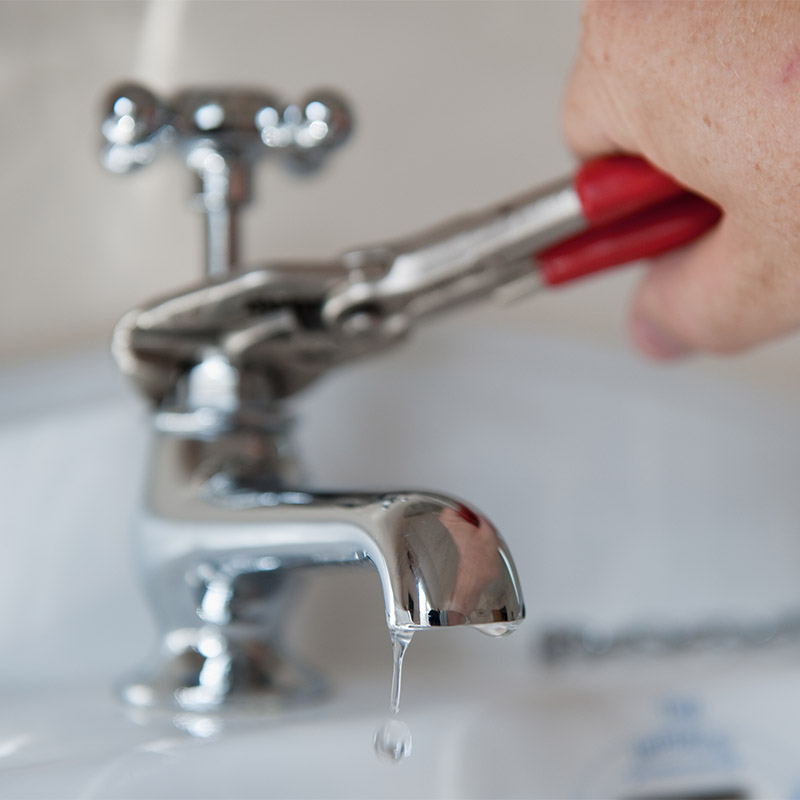Nearly everybody will have their own unique thinking when it comes to How to Fix a Dripping or Leaky Faucet .

Trickling taps could seem like a small aggravation, but their impact goes beyond just the inconvenience of the noise. From wasting water to incurring unneeded monetary expenses and health and wellness dangers, neglecting a trickling tap can cause numerous effects. In this write-up, we'll look into why it's vital to resolve this typical home issue promptly and efficiently.
Wastage of Water
Environmental Influence
Trickling faucets contribute significantly to water waste. According to the Environmental Protection Agency (EPA), a solitary faucet trickling at one drip per secondly can lose greater than 3,000 gallons of water annually. This not only pressures water sources but additionally impacts communities and wildlife depending on them.
Financial Expenses
Increased Water Costs
Beyond the environmental influence, leaking faucets can blow up water expenses substantially. The gathered waste over time converts right into higher utility expenditures, which might have been avoided with prompt repairs.
Possible Home Damage
In addition, extended trickling can result in harm to fixtures and surface areas bordering the faucet. Water buildup can trigger discoloration, corrosion, and also architectural problems if left neglected, resulting in added repair expenses.
Health Worries
Mold And Mildew and Mildew Growth
The consistent presence of wetness from a trickling faucet develops a perfect atmosphere for mold and mildew and mold growth. These fungi not just endanger interior air quality however additionally pose health and wellness dangers, specifically for people with respiratory conditions or allergic reactions.
Waterborne Conditions
Stagnant water in leaking faucets can end up being a breeding place for microorganisms and various other pathogens, enhancing the danger of waterborne conditions. Impurities such as Legionella germs flourish in stationary water, possibly bring about major diseases when consumed or breathed in.
Do it yourself vs. Specialist Repair work
Benefits and drawbacks of Do It Yourself Fixing
While some may attempt to take care of a leaking faucet themselves, DIY repairs include their very own collection of challenges. Without proper understanding and devices, do it yourself efforts can aggravate the concern or lead to insufficient repairs, prolonging the issue.
Advantages of Working With a Professional Plumber
Hiring a specialist plumber makes certain that the underlying source of the trickling faucet is dealt with efficiently. Plumbings possess the proficiency and equipment to detect and repair tap problems efficiently, conserving time and lessening the risk of additional damage.
Step-by-Step Overview to Taking Care Of a Dripping Faucet
Tools Called for
Before trying to take care of a dripping tap, gather the required tools, consisting of an adjustable wrench, screwdrivers, substitute parts (such as washing machines or cartridges), and plumber's tape.
Typical Faucet Issues and Their Solutions
Determine the type of tap and the specific problem triggering the drip. Usual issues consist of worn-out washers, rusty valve seats, or malfunctioning O-rings. Refer to maker instructions or on the internet tutorials for step-by-step support on repairs.
Preventive Measures
Normal Maintenance Tips
To avoid trickling faucets, do routine maintenance such as cleaning up aerators, inspecting for leaks, and changing damaged parts immediately. Additionally, think about installing water-saving gadgets or updating to much more reliable components.
Significance of Prompt Fixes
Addressing dripping faucets as quickly as they're noticed stops more water wastefulness and possible damage, ultimately saving both water and cash in the future.
Influence On Building Worth
Perception of Well-Maintained Home
Preserving a residential property in good condition, consisting of addressing maintenance issues like dripping faucets, improves its viewed value and value among prospective customers or occupants.
Impact on Resale Value
Features with properly maintained plumbing components, consisting of taps, command greater resale worths in the realty market. Resolving leaking faucets can contribute to a favorable impact throughout home assessments and settlements.
Environmental Responsibility
Individual Payment to Preservation
Taking obligation for repairing dripping faucets lines up with broader initiatives towards water conservation and environmental sustainability. Every person's activities jointly make a significant influence on protecting valuable resources.
Lasting Living Practices
By focusing on timely repairs and taking on water-saving routines, individuals add to sustainable living methods that benefit both existing and future generations.
Verdict
Dealing with a dripping tap goes beyond plain comfort; it's a vital step towards saving water, reducing economic expenses, and safeguarding health and wellness and home. Whether through do it yourself repairs or expert support, doing something about it to repair trickling taps is a little yet impactful means to promote liable stewardship of resources and contribute to a much healthier, a lot more lasting future.
How to Fix a Leaky Faucet: Step-by-Step Repair Guide
A leaky faucet may seem like a simple annoyance, but if it's not fixed promptly, that leak could cost hundreds to potentially thousands. From water damage to mold, mildew, and high water bills, even a tiny leak can be catastrophic if left unattended. Damage like this can even affect the overall value of your home, so it's important to take the right approach for leaky faucet repair. You may need the help of a plumber in some cases, but we've got a few tips you can try on how to fix a leaky faucet before calling the pros.
Four Faucet Types
When you're learning how to fix a leaky faucet, the first step is knowing what kind of faucet you're working with! There are four common types.
Cartridge Faucets
Cartridge faucets come in one- or two-handled varieties. In one-handled cartridge faucets, hot and cold water combines in a single cartridge. In the two-handled versions, hot and cold water are controlled separately and mixed in the faucet.
Ball Faucets
Ball faucets have a single lever you push up and down to adjust the pressure and rotate to change the temperature. A slotted metal ball controls the amount of water allowed into the spout.
Compression Washer Faucets
They're the oldest type of faucet, but they're still used in many homes — especially older ones. Compression faucets have two separate handles that, when turned, raise or lower the washer that seals a water valve. This valve stops water from flowing through the faucet when it is turned off.
Disc Faucets
Disc faucets rarely need to be repaired due to their maintenance-free design. The water flow is controlled by two discs — the upper one raises and lowers against a fixed lower disc, creating a watertight seal. If your disc faucet starts leaking, you may need to replace the seals or clean residue buildup from the inlets.
Fixing a Leaky Faucet
Step 1: Turn Off the Water
Whether you're learning how to fix a leaky bathtub faucet or how to fix a leaky kitchen faucet, always turn off the water supply to your working area when you're fixing a leak. The last thing you want is a flood added to your list of things to fix.
Look for the shutoff valves below your sink or around the tub and turn them clockwise to stop the water flow. If your faucet doesn't have shutoff valves, you may need to turn off the water for the whole house. Check to make sure it's off by turning the faucet on. If nothing comes out, you're ready to start the repair.
Step 2: Take Apart the Faucet
How you disassemble your faucet depends on the type of fixture you have. You can use a flathead screwdriver to remove the caps on top of the handle or handles for cartridge and compression faucets. Inside, you should see handle screws. Unscrew these with a screwdriver to remove the handle.
Disc- and ball-style faucets will typically have an inlet screw near the handle, and removing that will reveal the interior of the faucet.
Detach the Valve Stem
For cartridge- and compression-style faucets, you'll see the inner valve stem or cartridge once you remove the faucet handles. If you have a compression faucet, unscrew the brass valve stem. If you have a cartridge faucet, pull out the cartridge. If your cartridge has been in place for a while, it may require some tools or extra force to remove it due to mineral deposits.
Examine and Replace Parts
Once you've removed the parts, check them out to confirm what needs to be replaced. You may see corroded rubber washers, O-rings, stems, or cartridges. On a ball-style faucet, check the seats and springs for damage.
If you need to repair a leaky disc faucet, check the inlet and seals on the lower disc.
Once you determine what parts must be replaced, visit your local hardware store. Bring the damaged parts with you to ensure you can purchase the correct components to replace them.
Clean Valves and Faucet Cavity
If you've removed a stem or cartridge, you may notice mineral buildup in the faucet's threads. Use white vinegar to clean the valve seat by soaking it for a few minutes, then scrub it away with a soft toothbrush and rinse with warm water. You can also clean the interior of the faucet in the same way.
Reassemble the Faucet
Once your faucet is cleaned and the required parts have been replaced, it's time to reassemble it. Put the pieces back together and slowly turn the water supply back on. Doing this slowly is crucial because too much initial water pressure can damage the new hardware you've just installed.
https://homewarranty.firstam.com/blog/how-to-fix-leaky-faucet

Do you appreciate reading up on Why Are My Faucets Dripping (And Can I Fix It Myself)?? Post a remark further down. We'd be happy to know your views about this posting. We are looking forward that you visit us again soon. Appreciated our blog entry? Please quickly share it. Help someone else locate it. I praise you for being here. Please check our site back soon.